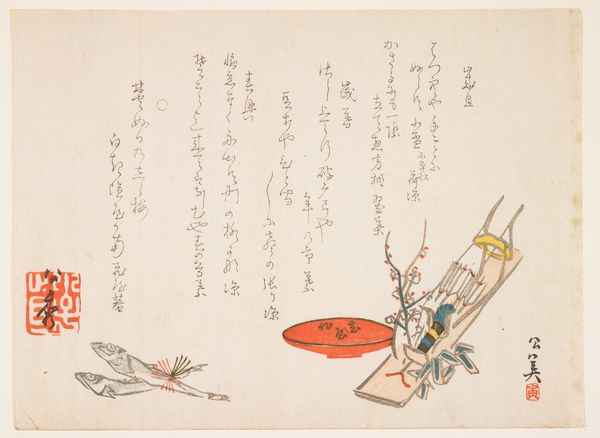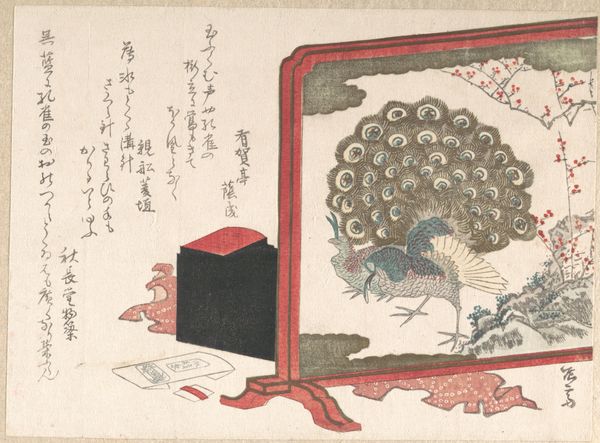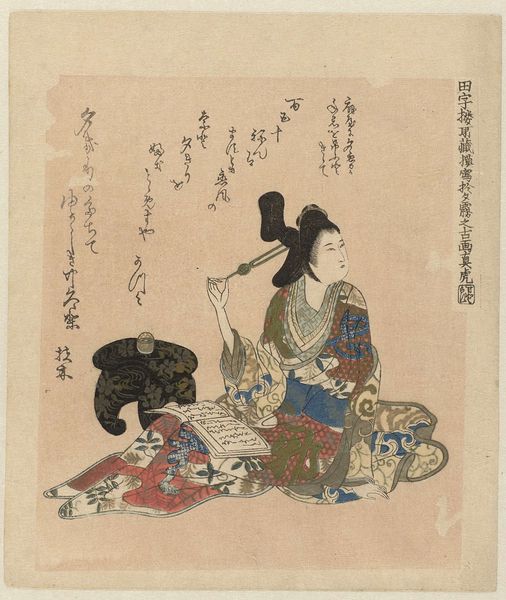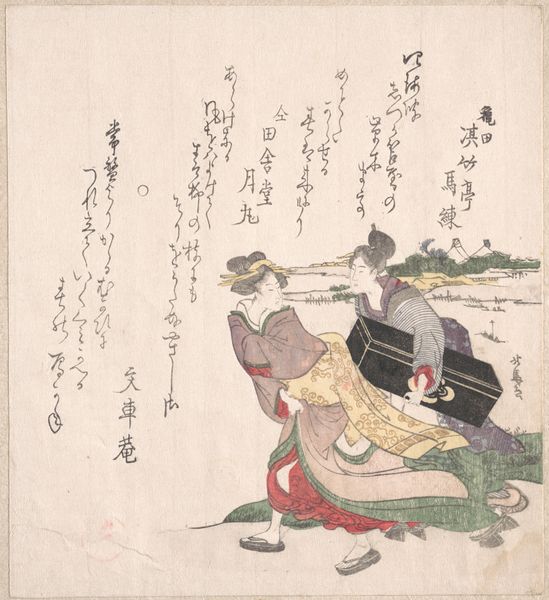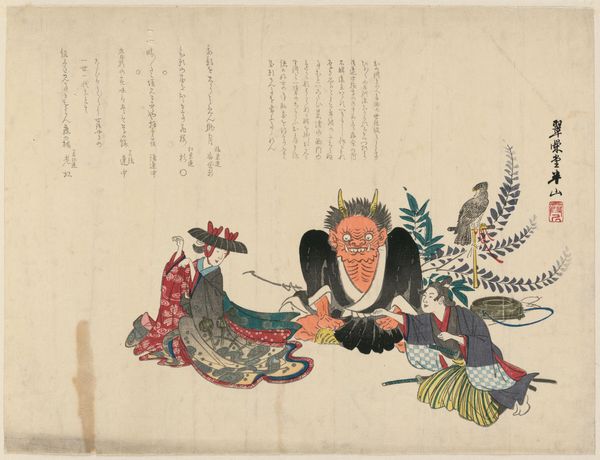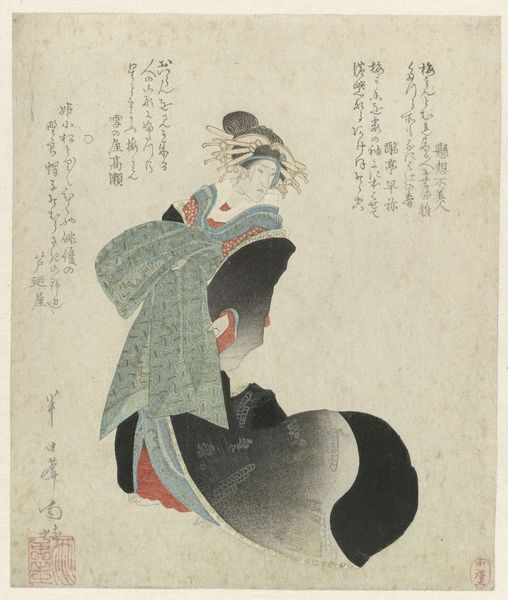
print, woodblock-print
#
blue ink drawing
#
narrative-art
# print
#
asian-art
#
ukiyo-e
#
figuration
#
woodblock-print
#
line
#
genre-painting
Dimensions: height 187 mm, width 248 mm
Copyright: Rijks Museum: Open Domain
Curator: Welcome. We’re here to discuss “Twee mannen met nieuwjaarsgeschenken,” or “Two Men with New Year's Gifts,” a woodblock print by Tamate Baishu, dating from around 1850 to 1860. Editor: The subdued color palette creates such an intimate atmosphere. The composition is so fascinating—the way these two figures are presented in this almost bare space is particularly striking, focusing the viewer’s gaze on their expressions and gestures. Curator: Indeed, it's a remarkable example of Ukiyo-e genre painting, depicting what appears to be a New Year's exchange. Notice the intricate lines used to define the men's robes and facial expressions. Editor: That little horse figure centered between the two is just enchanting. What can you tell me about the symbolism? Curator: The horse likely represents a votive offering, symbolizing good fortune and wishes for the New Year. The leaves it’s nestled upon likely carry cultural weight, signaling themes like longevity, good health or purity of spirit in this particular tradition. Editor: And the men's postures – both are kneeling, each with a hand extended – convey respect and possibly anticipation, a sharing of respect as they’re exchanging good fortune for the coming year. Curator: Absolutely. Consider the textual components as well, the inscription acts almost like a structural balance, doesn't it? Counterbalancing the image, creating a pleasing asymmetry. Editor: This work really reveals a slice of life from that era, doesn’t it? I find it endlessly compelling how visual cultures encode so many values and emotions in deceptively simple scenes. Curator: I concur. The balance of representation and technique creates an arresting visual experience. Editor: Indeed. The blend of form and symbolism, in that particular moment in time, allows us a privileged glimpse into an ancient culture.
Comments
No comments
Be the first to comment and join the conversation on the ultimate creative platform.
